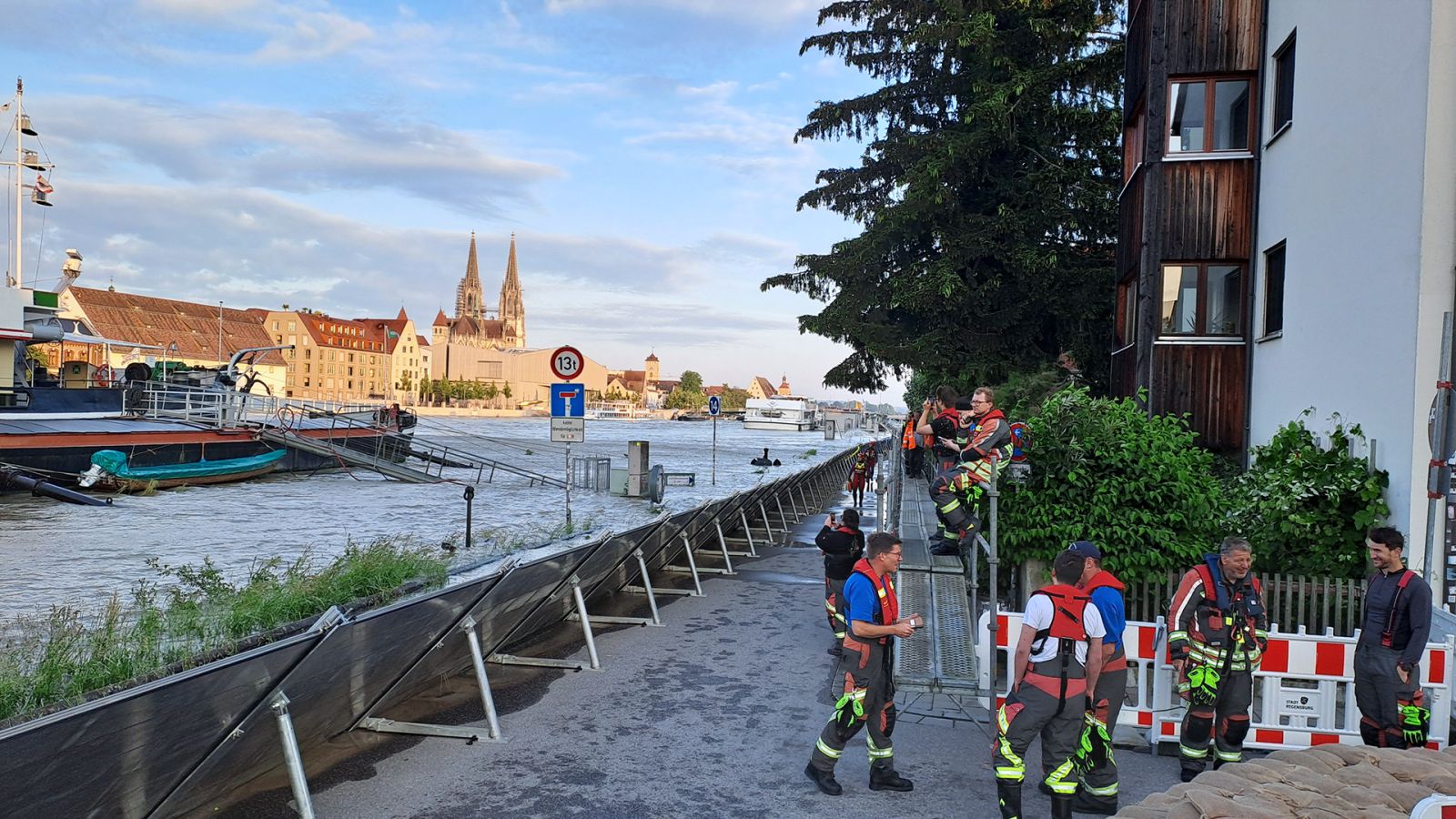
Voice of the Danube
When it comes to disaster response, failing to prepare is preparing to fail. When May ended with four days of enormous rainfall in wide parts of southern Germany, IAWD member REWAG, the Regensburg energy and water utility had their response plan wrapped up and ready for application. It was still not a cakewalk, but they were prepared, and therefore the Regensburg water supply did not fail.

Within a short four days, the 2024 flood in southern Germany poured between 100 and 300 millimeter of rain over a wide area. The German Weather Service states that large parts of the region were hit by the rainfall of the century, with a statistical return period of up to 300 years in some isolated cases. Bavaria and Baden-Württemberg were hit especially hard, with several rivers and streams reaching the flood of the century mark, and at least fifteen Bavarian districts and the three independent cities of Augsburg, Regensburg and Passau declaring a state of disaster. Thousands had to be evacuated, and in some places, people were rescued from their homes by boat and helicopter. At least six people died as a result of the floods and several people were reported missing. The damage to buildings, infrastructures and agriculture was enormous: Insurance companies have provisionally estimated the amount of insured losses at around two to three billion euros.
In picturesque Regensburg, the quay wall of a street on the edge of the old town threatened to crumble into the river Danube, taking moorings, including moored ships, with it. Drifting ships and moorings would have posed a risk to bridges and their integrated gas supply lines (gas pipes) on the bridges. Also at risk was a large culvert line under the Danube. Major short-term network closures were necessary at this point and a "network watch", which could have initiated immediate measures if the quay wall had been demolished, also had to be provided for several days.

The one thing that kept going was the water supply network. REWAG, the Regensburg utilty company, had 30 employees working around the clock to cope with multiple problems that rose with the flood level: One of their extraction plants, the waterworks at Oberer Wöhrd, directly on the Danube, had to shut down completely, because it pumps 80% bank filtrate. Water supply structures such as shafts and the Sallern waterworks, REWAG's largest extraction plant, had to be secured using dam beams and dewatering. In addition, the old machine house at the Sallern waterworks had to be flooded to prevent the building from being destroyed. In the ensuing chaos, the REWAG team never missed a beat, relying on a very detailed disaster response plan that listed the required safety measures for different water levels. Following this plan, the utility successfully limited the damage, maintaining Regensburg's water supply throughout the crisis.
Failing to prepare is preparing to fail. Plan for the worst to achieve the best.


